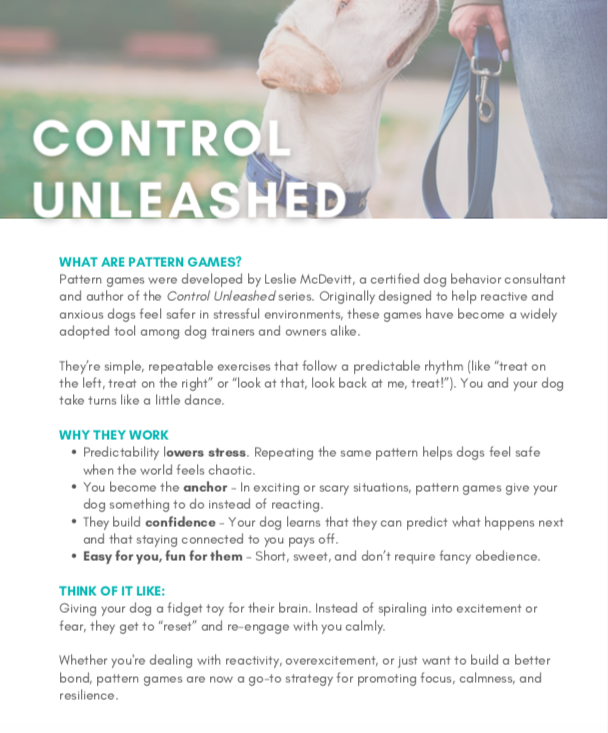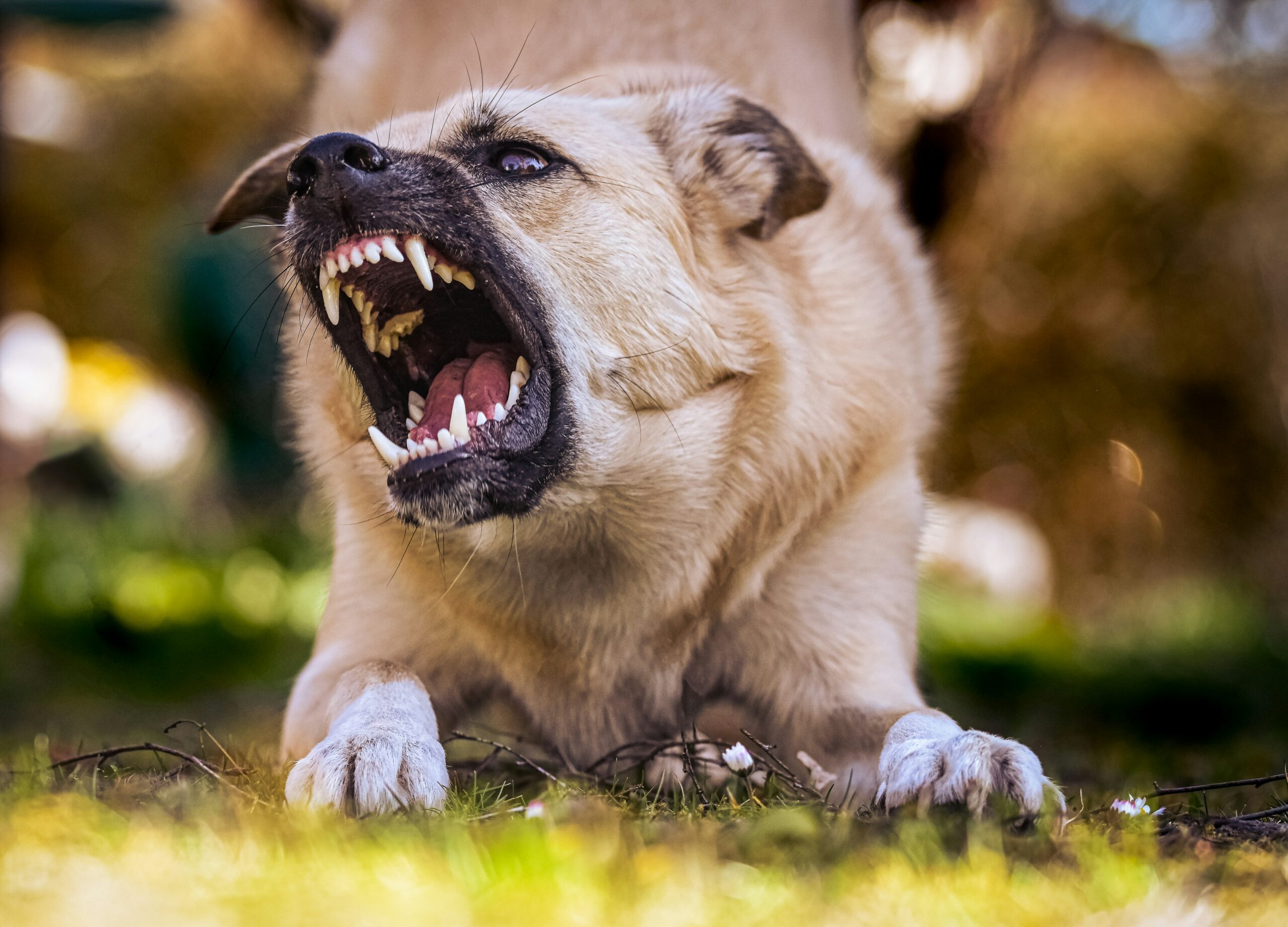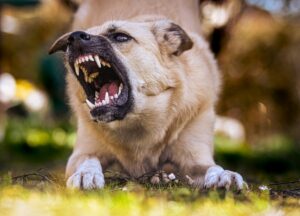This post was inspired by a question from a client, about how to manage their reactive dog on a trail walk where they may suddenly run into a trigger and there is little space to move away.
Reactivity is one of the top behavioural concerns that us dog trainers address. Many clients come to us with questions about how to manage and change their dog’s barking, lunging, or big feelings around triggers (usually other dogs, but dogs can be human-reactive too!). Behaviour modification for reactivity involves two different categories of training: management to prevent rehearsal of unwanted behaviours, and desensitization/counterconditioning (DS/CC) to change how our dogs feel about their triggers. This blog post focuses on management strategies to prevent our dogs from rehearsing reactive behaviours.
My primary goals when walking a reactive dog are preventing barky-lungy behaviour as much as possible, and keeping things safe and predictable on walks. To this end, I like to have a few fluent skills in place, and a well-trained Exit Strategy for anytime we see a trigger. I try to make my Exit Strategy the same every time- it becomes a predictable pattern for my dog. Predictability is key to helping our dogs feel safe- when something suddenly happens on a walk (i.e. a trigger appears), things feel unpredictable and scary for our dogs, so we as handlers need to add predictability as much as possible (i.e. do the same thing every time a trigger appears).
These are the 3 skills I want to train to fluency to manage a reactive dog; note that you will want to practice these in a safe, low-distraction environment first.
Luring and Magnet Hand
If you are struggling to get your dog’s attention or have them take treats in distracting or triggering environments; try the following:
1) Luring: a lure means putting a cookie to your dog’s nose and guiding them where you want to go, then feeding them the cookie as soon as they are in the correct position. Use a smelly high-value treat for this- remember that for dogs, treats are more about the smell than they are the taste! Put it to your dog’s nose gently and let them sniff the cookie. Don’t pull your hand away; instead, wait until they’re interested in the cookie and “magnetized” to your hand, then lure them a few feet, then mark and reward them by allowing them to eat the cookie.
2) Magnet Hand: This is an excellent exercise for reactive dogs! It’s similar to luring but instead you’re using a handful of high-value treats and your hand becomes like a Kong, and you dispense the treats to the dog as they move.
Pattern Games: Up-Down Game and Ping Pong
Pattern games are designed to help dogs learn how to cope with and process various environmental stimuli in a way that is safe and predictable. These games create predictable and repetitive patterns that the dog can learn and anticipate. This predictability helps to reduce stress and anxiety in dogs, as they know what to expect and what is expected of them. Pattern games use calming, predictable movement to bring dogs back down to earth if they’re feeling amped, excited, wiggly, etc. Two of my fave pattern games (which you can use anytime, anywhere!) are below.

Up-Down Game: This pattern game builds attention and focus, especially around distractions! Start by training this in the house or in a low-distraction environment, then gradually introduce it in more distracting environments. I like to use this game to “bring my dog back down to earth” and get them to refocus after something super distracting or exciting has happened.
Ping Pong: Ping Pong is a modification of the Up-Down game above, which works well for dogs who are wiggly and need to move instead of staying stationary.
Whiplash Turn
This is my FAVE behaviour to train because it’s basically 50 different behaviours in 1. For reactive dogs, I use it to get their attention FAST when we suddenly encounter a trigger (think coming around a corner and suddenly there’s another dog). The key to success here is choosing a fast, snappy recall cue; I do not use my dog’s name here, instead I opt for a funny sound (kissy noise, “bup-bup-bup”, or something like that). You will also want to use high-value treats (obviously); however, for most reactive dogs, what they actually want is space from the trigger, so being able to move away from it is reinforcing as well!
You will want to practice this in a low-distraction environment beforehand; I really want this behaviour to be solid before using it outside and around triggers. The other thing to keep in mind is that to avoid poisoning the cue (having it be associated with something negative), use the Whiplash Turn randomly on walks “just for fun” and reinforce with a really really good treat. If you only use this cue when something “scary” is about to happen, your dog will learn that it predicts something negative and instead of recalling, he’ll freeze and scan. (I did this by accident with my youngest dog so I’d like to save you from the same fate!).
This technique teaches fast, reliable recall.
Modifications:
- add distance: recall your dog while they are oriented away from you, at a distance of 15-30 feet. Mark when they orient to you
- add distractions: set up a distraction about 20 feet from your dog (e..g a toy, empty bowl or bowl with food in it, interesting object, etc). Allow your dog to look at it, then recall them using your Whiplash turn cue
Exit Strategy: Have a “Predictable Pattern” Routine for Every Encounter
If I am working with a reactive dog, I don’t like to wait until they’re reacting to find out whether they’ll react: this is especially important when working with dogs who are “unpredictable” (you don’t know which people or dogs they’ll react to because it only happens sometimes). I work under the assumption that they’ll react to every trigger, so I manage them every time we see someone. This is how I avoid them practicing barky-lungy behaviour. Here is my Exit Strategy routine; you can modify this according to your dog’s needs and skill level. Again, practice your Exit Strategy out-of-context first so your dog knows the drill well.
- Before I go for a walk, I think about my “emergency exits” along the route ( Is there a driveway, field, ditch, etc, where I can head to quickly with my dog to make space?)
- At the first sign of a trigger, I recall my dog using the Whiplash Turn and move them to one of my “emergency exits” (place where I can safely let the trigger pass by)
- I then either do a treat scatter OR the Up-Down Game to keep my dog with me and focused on food; I want my dog to either ignore the trigger or give it a quick glance and then dismiss it. Only when I am consistently at this level of success do I move to the next level:
- As my dog gets better and better at letting triggers pass by (ignoring or dismissing every time) I start to watch for signs that they “know the drill”: when they see a trigger, do they look back to me because they know they’ll get food from me? This tells me that the trigger is now a cue for my dog to start their Exit Strategy. If so, I immediately reinforce this. I use my Exit Strategy to pull them over and let the trigger pass.
- As their feelings change around triggers, I can then work on asking my dog to heel past a trigger while feeding them OR toss a treat on the ground to move them past.
You and your dog deserve calm, peaceful walks together! That’s why having effective management strategies is so important when out and about with a reactive dog: feeling like you’ve got some control and some good skills in your training toolbox, will help you feel more confident and safe when navigating reactivity. Try the above strategies on your next walk with your dog!
Looking for help with your reactive dog? We’ve got you! Contact us – we’d be happy to help!

